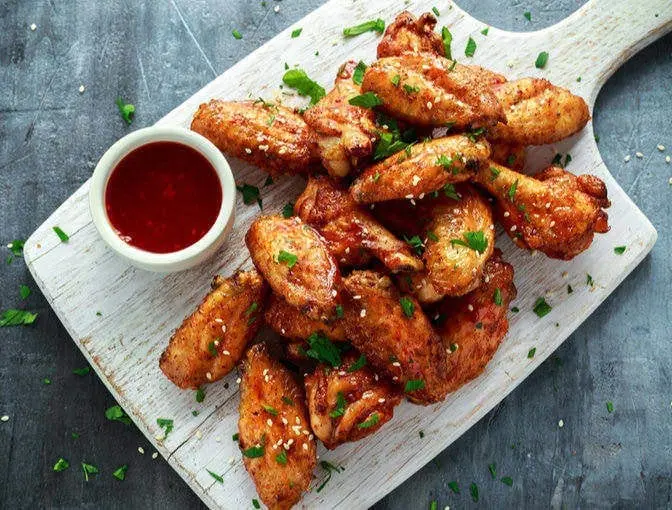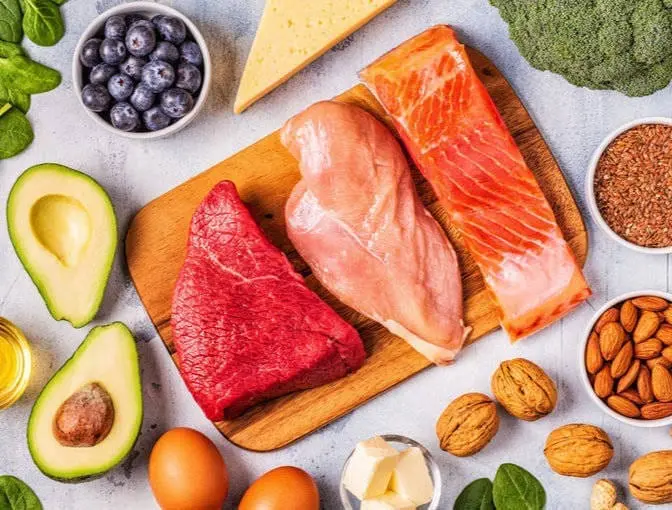Do you know how much protein in chicken, exactly?
An average American eats 93.8 pounds (42.5kg) of chicken in 2018. And the number is expected to rise.
“Why do people love chicken so much?”
A major factor is because of the protein in chicken.
It’s optimum for fat protein efficient people, dieters, and muscle builders because it’s packed with all 9 essential amino acids, making it a ‘complete’ protein, rich in vitamin B complex (niacin, vitamin B-6), selenium and phosphorus.
That’s why chicken became so popular, but does it really have that much protein as the society says?
Here, we’ll find out how much protein is in chicken, exactly?
And are all chicken parts equal?
Before we get to the chicken, why do we need protein in the first place?
The primary function of protein is to build, repair, and strengthen cells such as hormones like insulin, carriers like hemoglobin and enzymes such as amylase. These are all different types of proteins.
If protein is vital for your body, how much should you eat every day?
As a general guideline, the Institute of Medicine recommends a daily intake of 56g for 19 – 70-year-old males and 46g for 14 – 70-year-old females.
For more specific daily intake according to your age, height, weight, and daily activities use this Dietary Recommended Intake (RDI) calculator to calculate how much nutrients you need daily.
How Much Chicken Should You Eat In A Day?
Our bodies desire nutritional variety.
— Eric Edmeades, trainer of Mindvalley’s WILDFIT Quest
Imagine a round plate like this in front of you. That’s how much healthy protein you should eat in a day — a quarter of your plate.

Since chicken alone cannot provide all of your nutritional requirements, it’s important to get your proteins from a variety of sources such as legumes, seafood, and vegetables.
Simply because our bodies have been programmed to desire nutritional variety.
Why Is Chicken a Good Source of Protein?
Alright, back to the chicken business…
There are plenty of foods rich in protein, but chicken (one part of it) is crowned as one of the leanest proteins.
Why?
- Chicken is better than red meat. In general, chicken has less saturated fats (bad fats) than red meat. Too much saturated fats can increase your blood cholesterol level, particularly the bad cholesterols.
- Chicken helps to control weight. Chicken is a low-carb food that is rich in protein and low in calories (skinless and without visible fats). The protein in chicken makes you feel full without consuming too many calories, which is perfect for epic weight loss.
However, too much chicken can lead to weight gain, so be sure to eat within the recommended daily intake (at most, a quarter of your plate).
What Is the Percentage of Protein in Chicken?
How much protein is in chicken?
First of all, not all chickens are created equal, because chickens injected with tons of antibiotics and hormones are more harmful than organic chickens.
Chicken nuggets and fried chickens don’t qualify as healthy poultry because of the batter, spices, oils, and seasonings.
Second, not all chicken parts are equal either. For example, the amount of protein in chicken breast differs from the protein in a chicken drumstick.
Each cut has its own nutrient composition, and you’re about to find out which cut has the highest protein.
What part of the chicken has the highest protein?
Good question, because if you’re looking for the leanest cut with the highest source of protein, then the chicken breast is definitely the way to go!
“How many grams of protein is in a chicken breast?”
Below we’ve broken down the protein and nutrients of all the different chicken cuts:
Chicken breast
One piece of grilled skinless chicken breast (196g / 7oz) has:
- 296 calories
- 59.9g of protein
- 6.21g of fat
- 506mg of phosphorus
- 766mg of potassium
- 55.7µg of selenium
- 2.27mg of vitamin B-6.

With skin, the chicken breast contains 29.8g of protein and 7.78g of fat.
For every 100g (3.5oz), the amount of chicken breast protein is 30.5g (skinless).
Chicken thigh
One piece of braised skinless chicken thigh (111g / 3.9oz) contains:
- 195 calories
- 27.3g of protein
- 9.58g of fat
- 223mg of phosphorus
- 295mg of potassium
- 32.4µg of selenium
- 0.5mg of vitamin B-6.

With skin, the protein rises to 31.7g and fat to 11.1g.
For every 100g (3.5oz), there is 24.6g of protein in a piece of chicken thigh (skinless).
Chicken drumstick
A piece of braised skinless drumstick (95g / 3.35oz) has:
- 142 calories
- 22.7g of protein
- 5.65g of fat
- 175mg of phosphorus
- 227mg of potassium
- 26.5µg of selenium
- 0.35mg of vitamin B-6.

With skin (105g / 3.7oz), it has 25.1g of protein and 6.25g of fat.
For every 100g (3.5oz), the drumstick contains 23.9g of protein and 5.95g of fat.
Chicken wings
1 ounce or 11g, with bone, baked skinless chicken drumstick contains:
- 22.1 calories
- 3.32g of protein
- 0.89g of fat
- 18.2mg of phosphorus
- 22.9mg of potassium
- 2.7µg of selenium
- 0.064mg of vitamin B-6.

With skin, the wing has 3.62g of protein and 0.96g of fat.
For every 100g (3.5oz), the wings contain 30.2g of protein and 8.06g of fat.
What Foods Are the Highest In Protein?
Eating chicken every day would be boring, wouldn’t it?
We also need other protein sources, like soy protein or vegetable protein, as they contain other nutrients that chicken alone can’t provide. That’s why we’ve given you a list of foods for you to choose from if you want to keep your protein sources varied.
Top 10 best foods that are high in protein in descending order per 100g (3.5oz):
- Grated parmesan: 35.8g
- Lean chicken breast: 32.1g
- Lean pork chop: 31g
- Tuna: 29.9g
- Seeds (squash and pumpkin seeds): 29.8g
- Beef (skirt steak): 28.7
- Firm tofu: 17.3g
- Egg: 12.6g
- Lentils: 9g
- Low-fat yogurt: 5.7g
Switching to a Healthy Protein-Rich Diet
‘Diet does not mean ‘temporary alteration of your life for short-term gain. It means ‘way of life.’
— Eric Edmeades, trainer of Mindvalley’s WILDFIT Quest
When you start living life close to a human diet, your body will undergo a huge transformation.
Your skin gets better, you get more energy, you sleep better, and you lose weight.

A healthy protein-rich diet is part of the human diet, and this could be your first step towards reclaiming optimal health.
At this point, you’ve gained a sense of awareness of the food you eat. This is a huge step.
Don’t stop here.
Read more and truly understand what you’re eating. This will completely change how you see food. Eventually, you’ll have a totally new and healthy relationship with your food.








